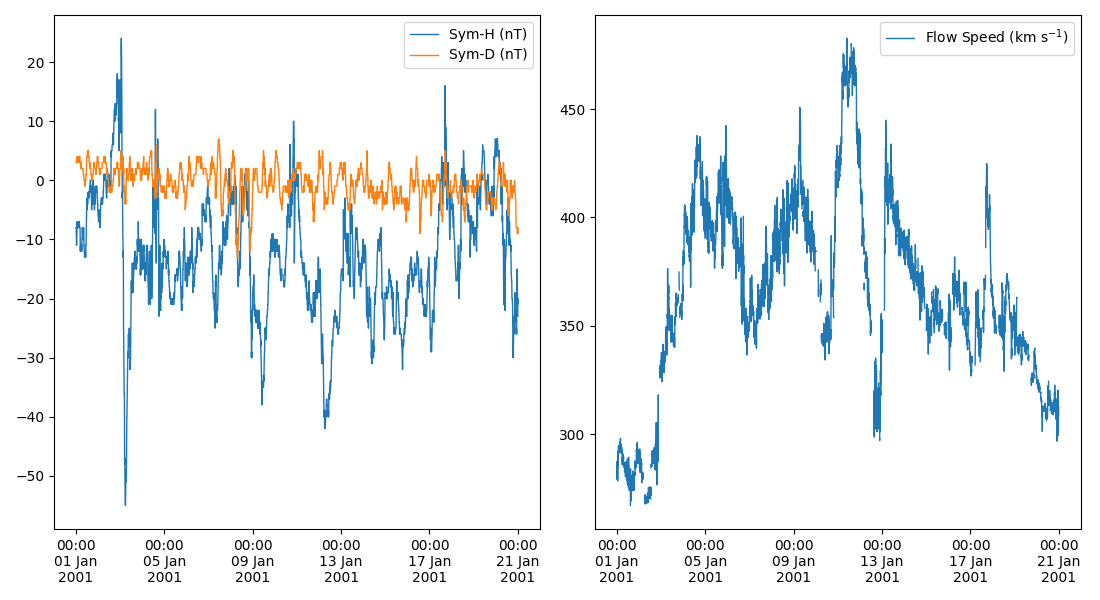Python tool for downloading, converting and reading OMNI solar wind data.
If you make use of the OMNI data please acknowledge and cite as specified here: https://omniweb.gsfc.nasa.gov/html/citing.html
Simply install using pip3:
pip3 install pyomnidata --userAlternatively install from this repository:
git clone https://github.com/mattkjames7/pyomnidata
cd pyomnidata
#EITHER build a wheel and install with pip (better)
python3 setup.py bdist_wheel
pip3 install dist/pyomnidata-1.0.0-py3-none-any.whl --user
#OR directly using setup py (should work, not tested though)
python3 setup.py install --userFor this to work properly - you will need to set up the $OMNIDATA_PATH environment variable to point to a folder where you want to store the data. Do this by adding something along the lines of the following to the bottom of your ~/.bashrc file:
export OMNIDATA_PATH=/path/to/omni/dataDownload OMNI data like this:
import pyomnidata
#download all available data
pyomnidata.UpdateLocalData()Download F10.7 index (solar flux at 10.7 cm):
pyomnidata.UpdateSolarFlux(EndDate=2021024)where EndDate is the last date which you want to request solar flux data for. This should be set to something at least a few days prior to the current date, if you request a date which currently has no available data then the download will fail.
Get the OMNI parameters like so:
####OMNI parameters####
#Year can either be a single year:
Year = 2001
#or it can be a range:
Year = [2001,2004]
#5 minute resolution data
data = pyomnidata.GetOMNI(Year,Res=5)
#1 minute data
data = pyomnidata.GetOMNI(Year,Res=1)
####solar flux###
#all of the data
data = pyomnidata.GetSolarFlux()
#a single date
data = pyomnidata.GetSolarFlux(Date=20050101)
#a range of dates
data = pyomnidata.GetSolarFlux(Date=[20020101,20020103])The returned data object is a numpy.recarray object which contains all of the OMNI data requested. To see what fields are stored use print(data.dtype.names). The units are as presented here: https://omniweb.gsfc.nasa.gov/html/omni_min_data.html#4b
Use the PlotOMNI function, e.g.:
import matplotlib.pyplot as plt
#create a figure
plt.figure(figsize=(11,6))
#plot some stuff in one panel
ax0 = pyomnidata.PlotOMNI(['SymH','SymD'],[20010101,20010120],fig=plt,maps=[2,1,0,0])
#and a second panel
ax1 = pyomnidata.PlotOMNI(['FlowSpeed'],[20010101,20010120],fig=plt,maps=[2,1,1,0])
#fit things a bit nicer
plt.tight_layout()Which should produce something like the following:
